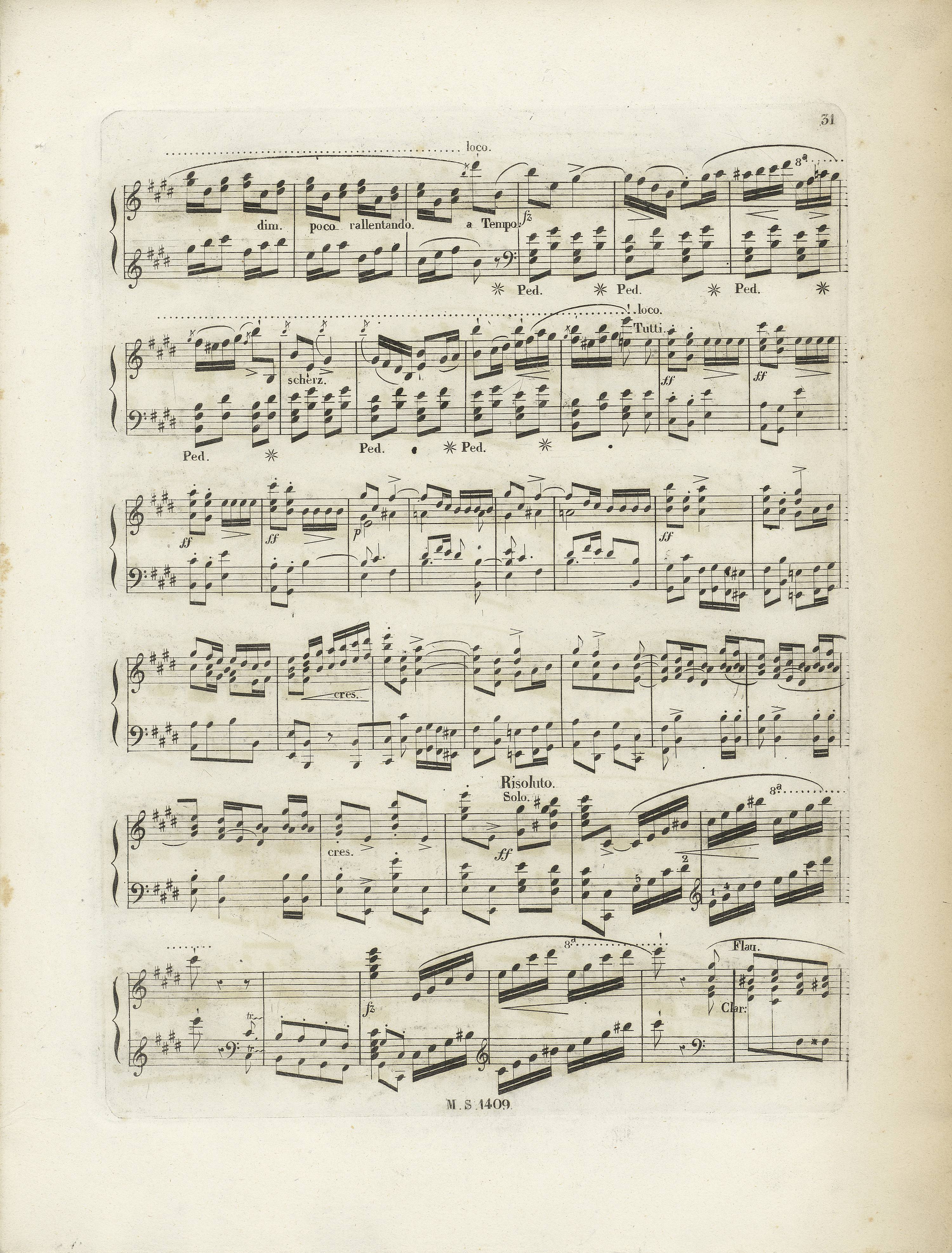



FEH contains an ambiguous entry in the 2nd half of the bar – two almost vertical lines that can be interpreted as an emphasis on the entry of the solo part or, on the contrary, as a deletion of the 3rd quaver of the bar beginning the soloist part. It seems that the latter is supported by the diagonal cross over the 4th quaver, perhaps written as an additional marking of a new, shifted entry of the soloist. However, a possible variant gives rise to a number of doubts:
- such marks do not allow for a credible handwriting analysis;
- the meaning of the entries is uncertain – neither the lines, nor the cross, otherwise a very typical mark of Chopin-teacher, give rise to an unambiguous interpretation;
- the person using FEH played the entire version for one piano, which is proven by entries in the Tutti (cf. e.g. bars 305-307). It is possible that the entry, even if it defines an authentic variant, was supposed, according to Chopin, to concern the version for one piano only.
Therefore, the given version must be approached with great caution as a possible variant of uncertain authenticity.
Compare the passage in the sources »
category imprint: Graphic ambiguousness; Differences between sources; Corrections & alterations
issues: Annotations in teaching copies, Authentic post-publication changes and variants, Annotations in FEH
notation: Pitch



